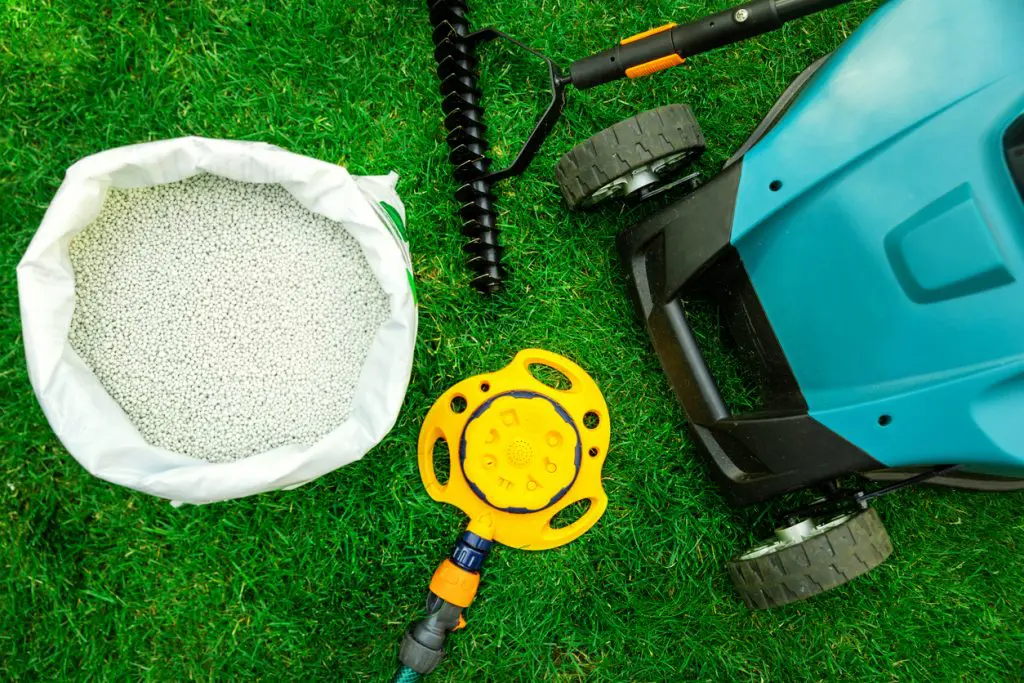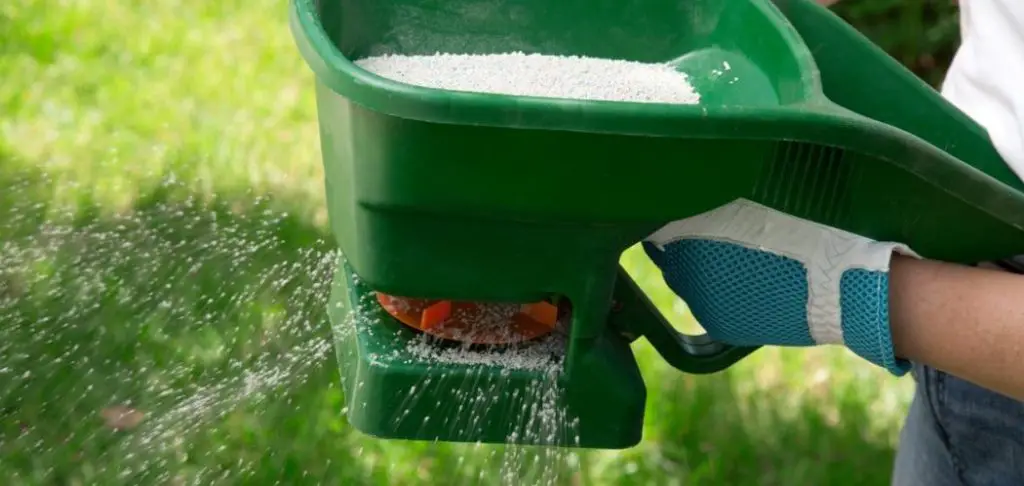Fertilizer seems like a pretty simple concept. You just sprinkle it on your lawn and you’re good to go, right? Wrong. Fertilizer is a bit more complex than that.
For starters…
Granular fertilizer absolutely must be watered in. If you don’t water in the fertilizer, you just wasted a lot of time fertilizing because you will not see any benefits of the fertilizer.

Fertilizer is any additive to the soil that replenishes its nutrients. Fertilizers can have different compositions, but they all contain three very important ingredients: nitrogen, phosphorus, and potassium. These three elements are essential to all plant life.
As plants suck up nutrients from the soil through their roots, the soil eventually gets depleted of nutrients. In nature, chemical exchanges happen between the air in the atmosphere and the dirt in soil. These processes take quite some time, and the atmosphere that your plants are growing in may not supply enough of a particular nutrient.
This is a huge reason why fertilizer is recommended to improve and extend a plant’s life. The grass in a lawn grows quickly, depleting the soil of nutrients in no time. If you want to keep your grass luscious and healthy, you need to fertilize it.
What Kinds of Fertilizers Are There?
There are three forms that fertilizer can come in: granular, powdered, and liquid.
Powdered fertilizers are some of the most difficult to work with. The airy powder can be inhaled easily, creating a major safety hazard for the lawn owner. They also tend to blow away with the wind before you can even water them in. This might fertilize your neighbor’s lawn, but it will shortchange yours.
Liquid fertilizers are relatively easy to use. It’s just like watering your lawn. However, the chemicals begin to degrade in water over time, so if the fertilizer isn’t used soon after mixing, it will be rendered useless. Liquid fertilizers are also easily subject to dilution if it rains shortly after you fertilizer your grass.
Granular fertilizer is one of the best forms of fertilizer on the market. It’s easy to spread it accurately, it’s heavy enough that it doesn’t blow away with the wind, and excess fertilizer can be stored for future use without worry of disintegration.

How to Use Granular Fertilizer
The first step that you should take before fertilizing your soil is to perform a soil test. A soil test will easily identify which macronutrients are lacking in your soil, making it very easy to choose a fertilizer ratio that best fulfills the needs of your lawn. Giving your lawn more nutrients than it needs can actually cause harm to your plants.
To spread your granular fertilizer, the cheapest and most available option is to do it with your hands. With gloved hands, spread the fertilizer evenly over your lawn. If you think that you won’t do it right, there are fertilizer spreaders that will get the job done for you. These spreaders will either drop or broadcast your fertilizer in an even fashion as you walk across your lawn operating the spreader.
Why Does Granular Fertilizer Need to Be Watered in?
After fertilizing, it is important to water in your fertilizer. This helps the granules break up and become part of the soil. As they dissolve into the soil, the granules release the chemicals within them, replenishing the soil of its lost nutrients.
You can manually water your lawn after fertilizing or you can let nature take its course. If rain is forecasted in the next 24 hours, don’t worry about watering in your fertilizer; the rain will do it for you.
Plants get their nutrients from the soil, through the uptake of their roots. Fertilizer is applied to the surface of the soil. Without water to drive the fertilizer down into the soil, how are the plant’s roots supposed to suck up the vital macronutrients you’ve just supplied them?
Leaving granules in the grass without watering them in also creates a potential hazard for wildlife. Birds in particular are susceptible to fertilizer poisoning because they pick up the granules believing that they are seeds. If a bird ingests fertilizer, it will die. When the bird dies, scavenger animals will come to feast on the carcass and they can be poisoned as well. If you love wildlife, you need to water in your fertilizer.
Lawns typically require 1” of water per week. This is just enough water to help the fertilizer soak into the soil without washing it away. Watering the lawn too heavily or fertilizing before a torrential rainstorm will result in the fertilizer washing away from your lawn. Not only will this wash away all of your efforts to have a nice lawn, but the runoff could poison natural water sources such as tanks and creeks.
If you are utilizing a fertilizer that contains weed killer, pay careful attention to the instructions on the packaging. Most weed-killing fertilizers advise to wait 24 hours before watering in the fertilizer, but some weed killers are water-resistant in as little as one hour. Follow the appropriate instructions provided by the manufacturer to get the most out of your fertilizer.
Do Liquid and Powder Fertilizers Need to Be Watered in?
Liquid fertilizers already contain a liquid, so they do not need to be watered in. Watering in a liquid fertilizer will just dilute it and wash it away.
Powdered fertilizers should be watered in, but you want to use a gentle water stream such as the mist setting on your water hose sprayer. The powder is in really fine pieces, and taking a large stream of water to it could wash it away from certain areas and cause the powder to collect in other areas.
It is crucial to water in granular fertilizers. Not doing so will deprive your soil of the nutrients that you are trying to supply it.



